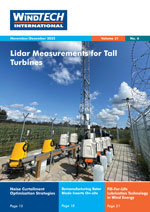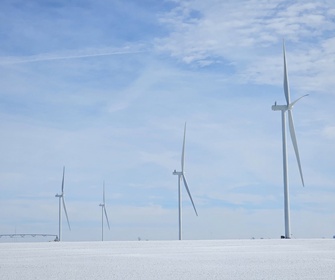 Balancing electricity supply and load has become more of a challenge for grid operators amid the rise in distributed energy resources. Events like the recent blackout in Spain and Portugal could become more frequent if European transmission system operators fail to adequately invest in grids. Demand-side management, balancing reserves, and dispatchable renewable energy sources can help stabilise grids.
Balancing electricity supply and load has become more of a challenge for grid operators amid the rise in distributed energy resources. Events like the recent blackout in Spain and Portugal could become more frequent if European transmission system operators fail to adequately invest in grids. Demand-side management, balancing reserves, and dispatchable renewable energy sources can help stabilise grids.
By Jonathan Bruegel, Power Sector Analyst – Europe, Institute for Energy Economics and Financial Analysis
Europe’s electricity grid plays a much more varied and crucial role than it used to. While its historical function was to transfer generation to consumers, it has taken on many more responsibilities in the last two decades. For example, interconnection capacities and volumes have increased, requiring strong cooperation between transmission system operators (TSOs) to balance the grid at the European level. In addition, consumers no longer just withdraw electricity from the grid but also play a producer role (as prosumers) through the following distributed energy resources:
- Distributed generation: power-generating technologies in distribution grids, including dispatchable resources, such as cogeneration units and biogas plants, and variable renewable energy sources, such as wind and solar.
- Energy storage: including batteries, flywheels (kinetic energy storage devices), pumped storage, and hydrogen.
- Demand response: changes in consumers’ normal electricity consumption patterns in response to market signals, such as time-variable prices or incentive payments.
All these changes have made the grid operator role much more complex. With more distributed energy resources, balancing supply and load is a constant challenge. Some technologies (energy storage) and mechanisms (ancillary services, such as frequency reserve, to ensure the system frequency does not deviate from 50Hz) help to stabilise grids.
However, because of increasing system complexity, some failures will be unavoidable. Events like the blackout in Spain and Portugal on 28 April 2025 are rare but could become more frequent if European TSOs fail to invest in addressing grid weaknesses (e.g. a lack of grid capacity, energy storage, and frequency reserve).
Lessons from the Iberian Blackout
While the causes of the blackout have not been identified yet, it is clear that:
1) generation technologies – whether thermal, renewable or nuclear – are not the cause of the event.
The power system is dynamic, with constant variation in the technology generation mix. The TSO’s responsibility is to ensure that production meets load, dispatching the generation technologies in merit order. Demand-side management (such as shifting or cutting load), balancing reserves, and dispatchable renewable energy sources (such as hydropower and geothermal) are tools to help balance the system.
2) the Spanish grid was not able to balance generation and load.
The grid frequency deviated from 50Hz, which should have triggered the start of frequency control reserves and frequency restoration reserves. These mechanisms were not activated quickly enough.
Initial lessons that can be learned from the event include: grids need strengthening and smartening, frequency reserves must be dimensioned appropriately, and energy storage capacities (batteries, pumped storage, hydrogen) need to be expanded. Regardless of the outcome of the investigation into the blackout, these investments will reduce the threat of similar events as the energy transition accelerates and the role of grids continues to evolve.
Impact on Wind Power
It is concerning that many voices have already blamed renewables for the blackout. Wind could be especially targeted as it is the leading renewable technology in Spain, constituting an average of 23% of the power generation mix during 2021 to 2024. However, besides the previously mentioned arguments that discard the generation side of the power market as being responsible for the blackout, the actual numbers show that renewables, and especially wind, could not be the driver of this event.
At 12.30 pm on 28 April 2025, a few minutes before the blackout, wind power produced 10% of the total electricity generated in Spain, and solar 55%, according to European Network of Transmission System Operators for Electricity data. These numbers are very much in line with typical midday generation patterns in Spain. Wind power exceeded 50% of the country’s power production for 86 days in 2024 and 35 days between January and April 2025, according to Red Eléctrica de España data.
This data clearly shows that the generation pattern on the day of the blackout had often been experienced in Spain previously, highlighting that the grid can handle such shares of renewables when all the tools to meet demand are correctly used and dimensioned. However, grid strengthening is very much needed to reflect the grid’s enhanced role in the new dynamic power market design.








